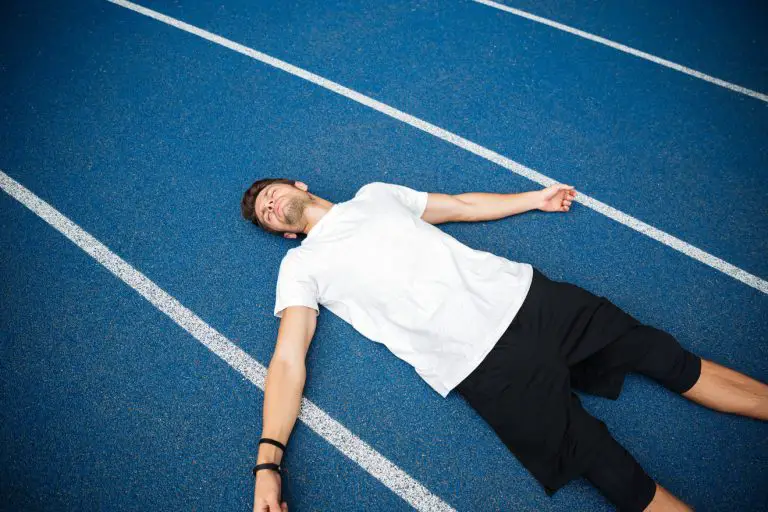How often should you change your workout routine?
Key takeaways
- A general guideline for adjusting your workout routine is every 4 to 8 weeks.
- Take into consideration your experience and goals when thinking about when to switch up your routine.
- Some signs that may signal a need for workout adjustment: your workout feels too easy, there is no more progress from doing your workouts, or you’re feeling bored with your workout.
- Change your workout routine by changing some of the following factors: switching out some exercises for a different variation of that exercise, increasing or decreasing your rest time, or changing the number of reps you do along with the weight of your dumbbells/barbells.
Timing is everything
When it comes to building muscle, improving strength, or losing fat, your workout routine is the foundation of your progress. However, one of the most common questions gym-goers face is how often they should change their workout routine to continue seeing results. Stick with the same exercises for too long, and you risk hitting a plateau where your body no longer responds to the same stimuli. Change your routine too frequently, and you might not give your body enough time to adapt and make meaningful progress.
This article explores how often you should switch up your workout routine, the science behind workout adaptation, and tips on when and why it might be time to make a change to maximize your results.
Why your body adapts to workouts
The human body is incredibly efficient at adapting to stress, and exercise is no exception. When you start a new workout routine, your muscles, cardiovascular system, and nervous system are challenged in ways they haven’t experienced before. This results in muscle soreness, strength gains, and improvements in endurance as your body works to adapt to the new demands.
However, as you continue to perform the same exercises with the same intensity, volume, and repetition scheme, your body gets used to the workout. Over time, these once-effective exercises no longer provide the same level of challenge, leading to a plateau in your progress. This is known as the principle of accommodation.
The goal of changing your workout routine is to prevent your body from becoming too comfortable and efficient at performing the same exercises. By introducing new movements, altering your intensity, or adjusting your volume, you can create new challenges that encourage further muscle growth and fat loss.
How often should you change your routine?
There’s no one-size-fits-all answer to this question, but a general rule of thumb is to make changes to your workout routine every 4 to 8 weeks. This timeframe is long enough for your body to make adaptations, but short enough to prevent stagnation. However, there are several factors to consider when deciding the optimal time to switch things up:
1. Your experience level
- Beginners: If you’re new to the gym, you’ll likely see significant progress in the first few months with a consistent routine. Beginners can often follow the same workout plan for up to 12 weeks before needing a change. During this time, their muscles are highly responsive to new stimuli, and progress tends to come quickly.
- Intermediate and advanced lifters: Once you’ve been training consistently for six months to a year, your progress may begin to slow down. At this stage, it’s a good idea to make adjustments to your workout every 6 to 8 weeks to continue challenging your body. Advanced lifters, in particular, need more frequent changes to avoid plateaus, as their bodies are already well-adapted to regular exercise.
2. Your goals
Your goals play a major role in how often you should change your routine. For example:
- Building muscle (hypertrophy): If your goal is muscle gain, it’s important to follow a structured program for at least 6 to 8 weeks to allow your body to adapt to increasing loads and volume. During this period, you can progressively overload your muscles by increasing weight, sets, or reps.
- Strength training: For those focused on building strength, sticking to a routine for 8 to 12 weeks can be beneficial. Strength gains often take longer to develop, and frequent changes in exercises may disrupt this process.
- Fat loss: If fat loss is your goal, you may need to adjust your routine every 4 to 6 weeks. This can include incorporating more cardio, increasing the intensity of your workouts, or introducing high-intensity interval training (HIIT) to keep your body burning fat efficiently.
Make sure to find out how these goals are different from each other (i.e. strength training vs hypertrophy) so you know which goal is right for you.
3. Signs that it’s time to change your routine
Rather than relying solely on an arbitrary timeline, it’s important to listen to your body and recognize signs that indicate it’s time for a change.
- You’re no longer making progress: if you haven’t seen an improvement in your lifts, muscle growth, or fat loss in several weeks, it’s a clear sign your body has adapted to your current routine. This is known as hitting a plateau.
- Workouts feel too easy: when you start a new routine, you should feel challenged. If your current workout feels easy, even when increasing the weight or intensity, it’s a sign that your body has fully adapted and needs a new stimulus to grow.
- Lack of motivation: mental fatigue is another indicator that it might be time for a change. If you find yourself bored, unmotivated, or dreading your workouts, introducing new exercises or training styles can help reignite your enthusiasm.
- Increased fatigue and soreness: while some soreness is normal, constant fatigue or soreness that lingers for days may indicate that your current routine is too taxing or repetitive. A new workout structure could help reduce overuse injuries and refresh your muscles.
4. How to change your routine for optimal results
When it’s time to change your workout routine, it doesn’t mean you need to do a complete overhaul. In fact, making small adjustments can often be more beneficial than switching to an entirely new program. Here are some effective ways to modify your routine:
- Switch up exercises: instead of doing the same exercises every workout, try variations of the ones you’ve been doing. For example, if you’ve been doing barbell squats, switch to dumbbell front squats or goblet squats. Swap out bench presses for incline presses or dips.
- Change the repetition scheme: if you’ve been training with low reps and heavy weights, try switching to higher reps with lighter weights, or vice versa. This change in volume and intensity will challenge your muscles in different ways and promote new growth.
- Alter workout splits: if you’ve been doing a push-pull legs split, consider switching to an upper/lower body split or full-body workouts. Changing your workout structure can provide a new challenge for your muscles.
- Adjust rest periods: another simple change is modifying the rest periods between sets. If you’ve been taking long rest periods (2-3 minutes), shorten them to 60 seconds to increase the intensity. For strength training, lengthening rest periods may allow you to lift heavier weights.
- Introduce new training techniques: techniques like supersets, drop sets, and tempo training can add variety and intensity to your workouts. These methods challenge your muscles differently and can lead to better results when incorporated into your routine.
5. Periodization
One of the most effective ways to ensure continuous progress is by incorporating periodization into your workout plan. Periodization involves planning different phases of training (such as hypertrophy, strength, or endurance) over a specific period, typically 8 to 12 weeks. Each phase has a different focus, and by cycling through these phases, you can avoid plateaus and keep your body adapting to new stimuli.
For example, you might spend 4 weeks focusing on hypertrophy with moderate weights and higher reps, followed by 4 weeks of strength training with heavier weights and lower reps. This type of structured approach ensures you’re constantly challenging your body and making progress.
Constant challenge leads to optimal results
To achieve optimal results in your fitness journey, it’s important to change your workout routine strategically. While it’s tempting to switch things up frequently, it’s equally important to allow your body enough time to adapt and make progress. Generally, adjusting your routine every 4 to 8 weeks is a good guideline, but the most effective approach is to listen to your body and make changes based on your goals, progress, and overall fitness level.
By varying your exercises, adjusting volume and intensity, and incorporating different training techniques, you can keep your workouts fresh, avoid plateaus, and continue making gains in both muscle and fat loss.
Written with the assistance of AI. Reviewed and edited by Marielle Livelo.







